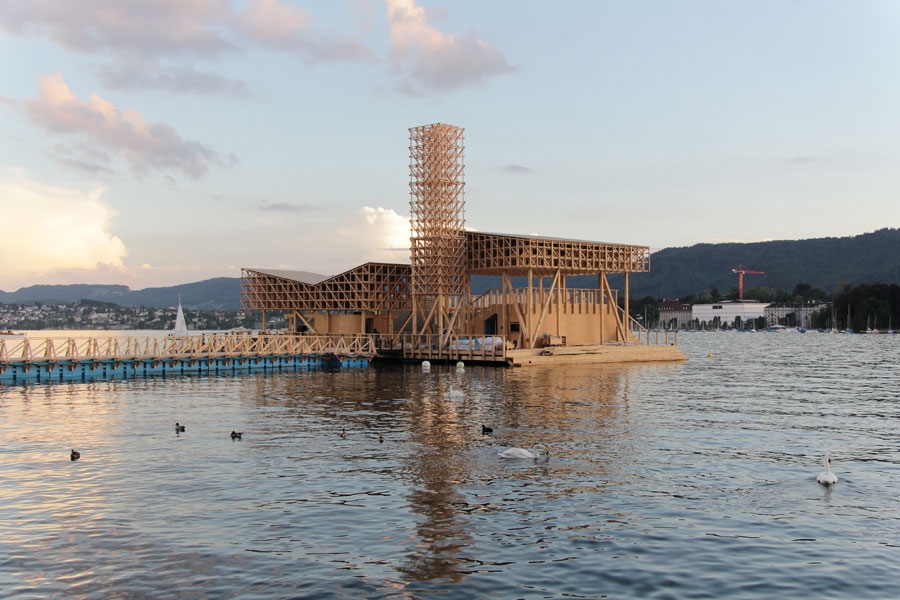Schwitters Miró Arp, Hauser & Wirth, 12 June – 18 September & Dada Afrika at Museum Rietberg, through 17 July
Dada is turning 100 this year, and as the place of birth of the radical movement, Zürich is host to various celebrations. Among them, Hauser & Wirth is bringing together over 100 works from American and European museums as well as international private collections by a trio of its iconic proponents: Kurt Schwitters, Joan Miró and Hans Arp. Sharing a taste for experimentation between mediums through the art of assemblage, the three artists and friends continuously influenced each other’s work, and created a radical material language that can still be read in contemporary practices today. Down at the Rietberg Museum, Switzerland’s only museum of non-European art, Dada Afrika looks at the collective’s fascination for art forms from Africa – think of the provocative ‘Soirées nègres’ at Cabaret Voltaire, which involved performances of pseudo-tribal sound poems, drum rhythms and masked dances. Expect to find Hannah Höch’s collages, as well as costumes by Sophie Taeuber-Arp and masks by Marcel Janco, alongside art, music and literature from Africa, America, Asia and Oceania.

Rochelle Feinstein, Galerie Francesca Pia, through 19 August
The work of the New York-based artist has only recently received some well-deserved attention: her mid-career retrospective just closed at the Centre d’Art Contemporain de Genève, and will tour to her home city at the Bronx Museum in 2018. For her first solo show at Francesca Pia, Feinstein is showing a range of paintings from the early 2000s to now, which attest to the artist’s loose definition of the medium – in a post-dadaist fashion one might argue – mixing silkscreen, photography and assemblage in hard-edged graphic compositions.

Caught in the Trees, Galerie Gregor Staiger, through 23 July
Painting is also à l’honneur at Gregor Staiger where an all-painting, mysteriously titled, group show is on, with works by John Finneran, Adele Röder, Lucy Stein and Jessica Warboys. The title, we’re told, reflects the non-deterministic intent of the show (‘we try to see in the dark; we toss up our questions and they catch in the trees’ in the words of American writer and poet Annie Dillard), while still hoping to spark dialogue between the four artists’ approach to the medium. So we won’t say more and let the work speak for itself.

Home, schwarzescafé, LUMA/Westbau space, Löwenbräu, 12 June – 18 September
While at LUMA Foundation’s Westbau space, which will be hosting part of Manifesta’s main exhibition, take a break at the schwarzescafé, the new coffee house and bar designed by Heimo Zobernig. The black, minimal architectural environment also serves as screening room, library and exhibition space, and its first group show draws on this multi-functionality to explore the idea of ‘home’ today – as a place of domesticity and comfort, but also conflict, while questioning and re-evaluating its modernist separation from the workspace – through works by Morag Keil, Karen Kilimnik, Georgie Nettell, Sam Pulitzer, Emily Sundblad, Frances Stark and Phillip Zach.

schwarzescafé designed by Heimo Zobernig, LUMA/Westbau space, Löwenbräu
Jill Magid: The Proposal, Kunst Halle Sankt Gallen, through 21 August
‘I am dancing with the rules, finding different ways to interpret them. I am looking for a way to enter and understand the system, to have a dialogue with it’, Jill Magid said in an interview with Aoife Rosenmeyer (Summer 2016 issue of ArtReview, out now). Through her projects, the American artist infiltrates seemingly impenetrable power systems such as the Dutch Secret Service, surveillance systems, and most recently, the complicated case of Mexican architect Luis Barragán’s legacy. The ultimate piece of The Barragán Archives, a longterm project started in 2013 and involving major installations and performances in spaces around the world, The Proposal at Kunst Halle Sankt Gallen (an hour train-ride from the city) continues questioning the forms of power, public access, and copyright that construct artistic legacy – and proposes a way to resolve it.

ArtReview‘s in Zurich this weekend (and in Basel from Monday) – check out our Instagram for our editor’s pics!
10 June 2016.
